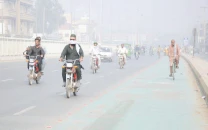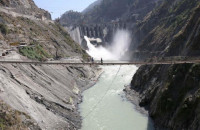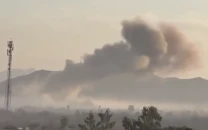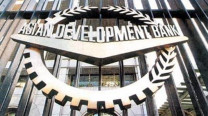Energy policy: Govt plans separate tariff for thermal, wind power
Power regulator opposes parallel tariff systems.

In order to attract investment in the energy sector, the government is planning to set a benchmark upfront tariff of eight cents per unit for thermal power plants and 13 to 16 cents per unit for wind power projects in the proposed tariff policy, sources say.
The government wants to announce an upfront tariff for setting up at least 1,000-megawatt wind power plants in Sindh with investment of $2.5 billion. Alternative Energy Development Board (AEDB) has bankable data on Gharo wind corridor in Hyderabad, according to which it has the potential to generate 50,000 MW of electricity. In this regard, 30,000 acres of land have been allocated for setting up wind power projects.
At present, nine companies are working on setting up 50MW wind power plants each to generate a total of 450 MW of electricity and their financial close is expected by the end of the current calendar year.
The government also hopes that Norwegian company NBT will set up wind mills to generate 250 to 500 MW in Sindh, following the announcement of an upfront tariff. The company has also signed an agreement with Zulfikar Ali Bhutto Institute of Science and Technology (Zabist) for constructing a 50MW wind power plant.
According to sources, any hike in upfront tariff will be linked to an index comprising loans including interest rate, inflation and variation in exchange rate. In upfront tariff, the role of National Electric Power Regulatory Authority (Nepra) will be minimised and the period of setting up one wind power plant will be reduced from existing three years to two years.
Deliberations going on
Sources said discussions were going on between different stakeholders, including Nepra, AEDB and the Ministry of Water and Power to finalise upfront tariffs for wind and thermal power plants.
“Upfront tariff of 16 cents per unit has been proposed for those wind power plants which will be set up with rupee loans from Pakistani banks and 13 cents per unit for those plants which will be set up with dollar loans from foreign banks,” a source said, adding Nepra wanted to replace the existing tariff system with upfront tariffs. However, the Ministry of Water and Power is insisting on introducing two parallel tariff systems – upfront and existing one based on project cost.
Sources said the government was mulling over a proposal of seven to eight cents per unit upfront tariff based on furnace oil price of Rs28,000 per ton. In this mechanism, the impact of increase in furnace oil price above Rs28,000 will be passed on to consumers, resulting in increase in tariff. At present, furnace oil price stands at over Rs70,000 per ton.
Current price of electricity being produced by thermal power plants, including rental power plants, ranges between 6 and 30 cents per unit.
In case of wind power plants, upfront tariff will come down to four cents per unit after 10 years. For example, according to a reference tariff sheet of Zorlu Energy Pakistan Limited, its existing tariff is 14.9 cents per unit which will be reduced to 4.5 cents per unit after 10 years.
Sources said Nepra authorities had argued that it did not create hurdles in the way of investment in wind power plants, adding “security situation, bank financing, international ratings of Pakistan and political instability are the main reasons behind low level of investment in the country.”
Published in The Express Tribune, July 8th, 2011.


















COMMENTS
Comments are moderated and generally will be posted if they are on-topic and not abusive.
For more information, please see our Comments FAQ